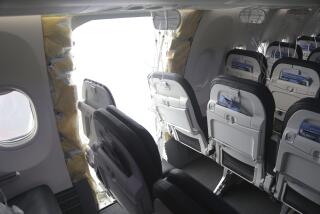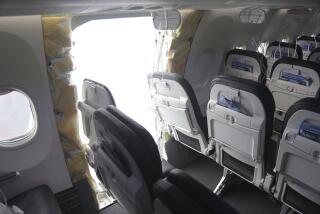FAA Proposes Changes to 737 Rudder System
SMITHTOWN, N.Y. — Proposed design changes for Boeing 737 jetliners prompted by the still unexplained crash of one of the planes near Pittsburgh, Pa., two years ago were announced by the Federal Aviation Administration on Thursday.
The most important proposals involve the rudder system of the aircraft. The rudder system remains the prime suspect in the crash of USAir Flight 427, but the FAA and the National Transportation Safety Board have never determined exactly what happened.
The rudder is the hinged back half of the vertical part of the tail that keeps an airplane aligned properly in flight. Boeing records include at least 187 instances in which a 737 rudder system has malfunctioned. While most of these incidents were minor, several caused planes to roll, yaw or dip violently.
Some experts believe a rudder glitch may have downed United Airlines Flight 585, a Boeing 737 that crashed in Colorado in 1991. The cause of that crash has never been determined either.
The FAA said one fix proposed Thursday would eliminate binding in the rudder control mechanism that can cause the rudder to stick or deflect on its own. A second fix would eliminate another rudder control system problem that can cause the plane to fishtail violently.
Investigators say both of these problems were studied thoroughly after the Pittsburgh crash and it was determined that neither caused the accident. Nonetheless, FAA Aircraft Certification Director Tom McSweeny said Thursday that making the fixes “seems like the prudent thing to do.”
McSweeny said none of the fixes should be considered corrections of design flaws. Instead, he said they should be viewed as “improvements to what we think are very good systems.”
The FAA will decide whether to adopt the proposed fixes after a 60-day period for public comment. If adopted, the proposals would require corrective action within three to 18 months. The total cost of making the fixes could be as much as $9 million.
More to Read
Inside the business of entertainment
The Wide Shot brings you news, analysis and insights on everything from streaming wars to production — and what it all means for the future.
You may occasionally receive promotional content from the Los Angeles Times.










